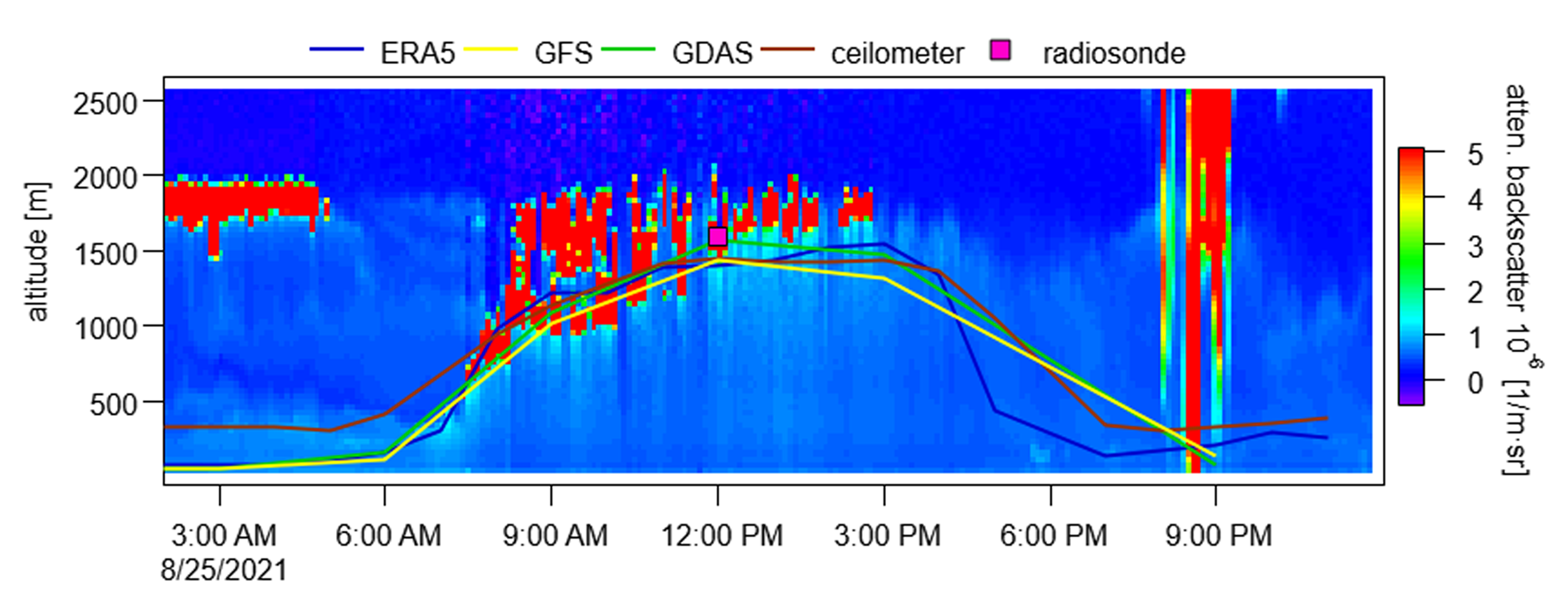Boundary Layer and Mixing Layer Height: Models vs. Ground-based Measurements Intercomparison
This study analyzes diurnal and seasonal variations in the Mixing Layer Height (MLH), an atmospheric variable essential for air quality assessments. The MLH was analyzed at a rural background Central European site Košetice for three years (2020–2022) by comparing ceilometer and radiosonde observations with four atmospheric models—ERA5, Reanalysis, GDAS, and GFS. Results show that Reanalysis consistently underestimates MLH, likely due to coarser grid spacing, while ERA5, GFS, and GDAS demonstrate reasonable performance but struggle with peak value accuracy. GDAS provides comparable MLH results with significantly smaller data sizes than GFS. All models underestimate MLH in summer (34–42%) and overestimate it in winter (11–20%), with variations linked to synoptic conditions and atmospheric stability.
The results highlight that models underestimate MLH during anticyclonic and most cyclonic conditions. Despite limitations, these models are valuable tools for estimating MLH in areas lacking ground-based observations, particularly for applications like ventilation index calculations and estimation of MLH influence on air quality.
- Julaha K.*, Ždímal V., Holubová Šmejkalová A., Komínková K., Zíková N.*: Boundary layer and mixing layer height: Models vs. Ground-based measurements intercomparison. Atmos. Res. 2025, 315(April 1), 107897. doi.org/10.1016/j.atmosres.2024.107897
